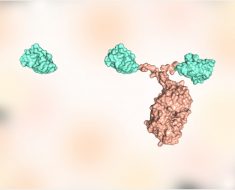
Using sea slug brains to map human brain development
A University of Massachusetts Amherst neuroscientist has been awarded a $3.1 million grant from the National Institute of Neurological Disease and Stroke to advance knowledge on human brain development by using an unusual subject: the brain of the sea slug.
This tiny invertebrate is an ideal candidate to study for brain development because it adds a countable number of neurons to its brain – the number increases more than 40-fold in less than eight weeks to a total of about 10,000 neurons – while the animal grows and performs behaviors, explains Paul Katz, professor of biology and director of the UMass Initiative on Neurosciences. This compares to the 100 billion or so neurons in the human brain, a relatively stable number from birth to death, but too many (and with too many connections) to map with existing technology.
By creating a series of complete maps, or connectomes, of every neural connection as the sea slug's brain develops, the research will shed light on how neurons are added to functional neural circuits.
Many neurological conditions result from problems arising during development, yet a fundamental understanding of how new neurons are added to growing circuits is lacking. The results of our research will provide an unprecedented look at how the synaptic networks of neurons across an entire brain change as new neurons are added."
Paul Katz, professor of biology and director of the UMass Initiative on Neurosciences
Collaborating with Jeff Lichtman's Lab at Harvard University, Katz will study the nudibranch mollusc Berghia stephanieae, a sea slug that is raised in the Katz Lab. Katz has been studying other sea slug species for some three decades but switched to Berghia when he moved to UMass Amherst six years ago.
"The brain [of the sea slug] actually gets bigger as the animal grows older and it adds more neurons, which is not true of you and me," Katz says. "When humans are born, we have more neurons than when we die. We lose neurons all the time. In fact, selectively pruning neurons and their connections is a normal part of human brain development."
Katz and team plan to map all of the sea slug's neurons and their connections – the so-called connectome – as new neurons are added by cutting the brains of the animals at different stages of their development into thousands and thousands of impossibly thin slices, 30 nanometers thick. Using a block-face serial scanning electron microscope housed in the EM core facility at the UMass Institute for Applied Life Sciences (IALS), the researchers will take images of the slices and then reconstruct all of the neurons and their connections at different developmental stages. This massive undertaking will require new methods in machine learning to classify neurons and synapses across samples.
"This undertaking – doing a developmental connectome – was science fiction just five years ago," Katz says. "And now the technology, the artificial intelligence, is advancing fast enough that we have a prayer. It would have taken a thousand man-years to be able to take those images and put them back together.
"This is a different way to build a brain," Katz adds. "It's the only system where you can do this type of analysis of looking to see how neurons are added to a brain over time."
The researchers will also use single-cell RNA sequencing technology to examine the identity of each neuron. "You bar code each of the cells with a particular tag and then when you sequence the RNA, all of the RNA from each single cell is separate. So you're learning which genes each cell is expressing," Katz explains.
Developmental connectomes have been constructed in only two other animals: the nematode worm, C. elegans, which does not add neurons as it grows; and the fruit fly, Drosophila melanogaster, which undergoes metamorphosis from larva to adult, so the larval nervous system is rearranged. The sea slug differs from these examples because neurons are constantly being added as the animal grows larger.
The research is an important step toward understanding human brain development.
"What we hope to learn are the rules – how does this happen?" Katz says. "We're exploring in order to figure out what questions to ask in more complicated systems."
University of Massachusetts Amherst
Posted in: Medical Science News | Medical Research News
Tags: Artificial Intelligence, Brain, Cell, Electron, Fruit, Genes, Machine Learning, Microscope, Microscopy, Nervous System, Neurological Disease, Neuron, Neurons, Research, RNA, RNA Sequencing, Scanning Electron Microscope, Stroke, Technology





